Exploring Japan on foot is one of the best ways to connect intimately with the country's diverse nature and stunning landscapes. From the snow-capped peak of Mount Fuji to the spiritual trails of Wakayama, each hike offers a unique perspective on Japanese culture and environment.
1. Mont Fuji, Yamanashi and Shizuoka
Mount Fuji is more than a mountain; it is a symbol of challenge and personal achievement for those who undertake its ascension. Well-trodden trails, such as the Yoshida and the Fujinomiya, offer different hiking experiences, each culminating with a spectacular view of Japan at dawn, known as from "Goraiko".
During the summer months, thousands of hikers climb Mount Fuji, attracted by the mountain's natural beauty and spiritual status. Although the climb is tough, the shelters along the way offer rest and comfort, making this experience accessible to even the least experienced.

2. Kumano Kodo Road, Kii Peninsula
The Kumano Kodo is a set of pilgrimage routes crossing mountains, forests and villages, with a background rich in history and spirituality. This network of trails connects several major Shinto shrines, and hiking here is often considered a pilgrimage, reconnecting visitors with nature and tradition.
Each Kumano Kodo route has its own character, offering varied views and different challenges. Hikers can choose between shorter, easier paths or longer, more challenging routes, each promising an immersive experience in Japan's cultural and natural landscape.

3. Kamikochi Valley, Japanese Alps
The Kamikochi Valley is a treasure of the Japanese Alps, offering breathtaking alpine panoramas accessible to all levels of hikers. The trails wind along the Azusa River, lined with birch and alpine pines, with magnificent mountains in the background.
This area is particularly pretty in spring and fall, when the colors change, transforming the landscape into a canvas of different tones of greens, yellows and reds. Kamikochi is also an excellent starting point for more strenuous hikes to the surrounding peaks, providing challenges for more experienced hikers.

4. Mont Go, Lean
Mount Koya is a central site for Shingon Buddhism and offers hikes that are both physical and spiritual. Trails lead through ancient forests to a temple complex where visitors can try their hand at monastic housing and meditation.
The path to Koyasan is dotted with stūpas and statues, enriching each step with cultural and spiritual discoveries. It is a place where nature and serenity meet, offering a contemplative break from the hustle and bustle of the cities.

5. Mont Daisen, Tottori
Mount Daisen is a sacred mountain with trails offering a range of hikes through lush forests and open grasslands. At the summit, hikers are rewarded with stunning views of the Sea of Japan and surrounding valleys.
In spring, the slopes of Mount Daisen are covered with shibazakura flowers, while in autumn, the trees' leaves turn vibrant shades of red and gold. The well-maintained trails make this mountain accessible to all levels of hikers, from families to fans of big climbs.

6. Parc National de Shiretoko, Hokkaido
Shiretoko National Park in Hokkaido is a wild and unspoiled place, famous for its diverse ecosystems and rich wildlife, including species such as brown bears and foxes. Hikes in this park offer a total immersion in nature where visitors can observe animals in their natural habitat and discover breathtaking coastal landscapes, often accessible only on foot or by boat.
In winter, Shiretoko transforms into a world of ice and snow, offering unique treks on frozen sea ice, a rare and exhilarating experience. In summer, hikers can explore forest trails leading to secluded waterfalls and lakes, where the serenity of Hokkaido's vast wilderness can be fully appreciated.

7. Takachiho Gorge Trail, Miyazaki
Takachiho Gorge is a site of great natural beauty, famous for its steep basalt cliffs and deep green waters. The trails allow you to follow the gorge and closely observe the powerful cascades that cascade down the rock walls, creating an impressive spectacle for hikers and photographers.
The legend says that the gods descended here to earth, and the path is dotted with small shrines and statues that enrich the hike with a mythological and spiritual dimension. It is a place where natural beauty blends with history and mythology, making every step on the trail memorable.

8. Aokigahara Forest, Yamanashi
Aokigahara Forest, known for its dense undergrowth and volcanic soil, offers a network of trails that wind through mystical forest landscapes. This forest, located at the foot of Mount Fuji, is often enveloped in deep silence, interrupted only by the singing of birds and the rustling of leaves, offering a peaceful and contemplative hiking experience.
Hiking in Aokigahara allows you to discover unique lava caves and rock formations, vestiges of the region's volcanic activity. The trails are well marked, but the density of the forest can give a feeling of withdrawal from the outside world, providing a perfect escape for those looking to reconnect with nature.

9. Nakasendo Trail
The Nakasendo is a historical path which offers a dive into Japan of the Edo period, connecting Tokyo and Kyoto. This trail passes through towns and villages that have retained their historic charm, with traditional teahouses and ryokans where hikers can relax and soak up the atmosphere of another era.
Hiking the Nakasendo isn't just a physical activity, it's a cultural experience in its own right, offering glimpses of Japanese traditions and a chance to meet locals and other hikers. Sections of the trail like Magome to Tsumago are particularly popular for their exceptional beauty and accessibility.

10. Yakushima, Kagoshima
Yakushima is an island that fascinates with its ancient forests and legendary trees, such as the Jomon cedars, some older than 2000 years old. Hikes on the island pass through moss forests and clear rivers, with trails climbing to ancient peaks offering spectacular ocean views.
This island is also a UNESCO World Heritage Site, recognized for its exceptional biodiversity and well-preserved ecosystems. Hiking Yakushima will be a chance to explore a nearly untouched natural world, where interactions between flora and fauna provide ongoing lessons in ecology and conservation.

Hiking in Japan is an enriching experience that will allow you to discover the natural beauty of the country while offering you unique perspectives on its culture and history. Whether for the panoramic views of Mount Fuji or the spiritual trails of Koyasan, each hike will be an invitation to explore and appreciate Japan's diverse landscape.





















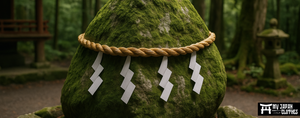



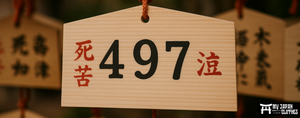








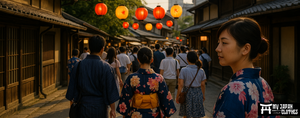




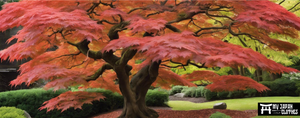





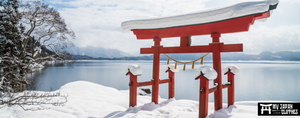





Leave a comment